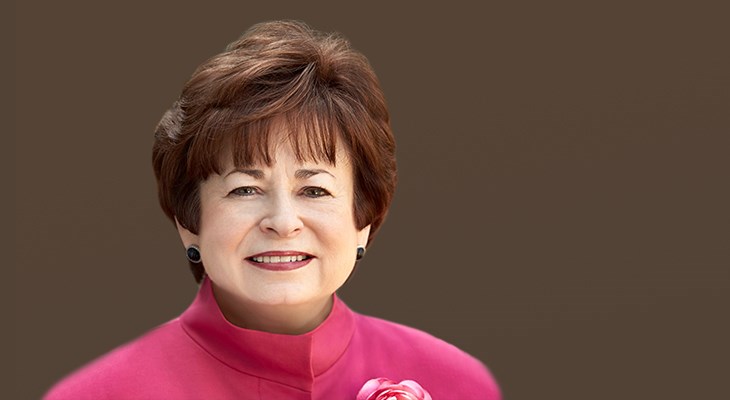Maxine Clark put up her own capital to launch the mega-successful Build-A-Bear retail chain. Given her grand vision for the company, she knew she’d need help from investors to reach her goals. But not everyone saw what Clark saw in Build-A-Bear Workshop.
“Before we had a store open I was talking to a few people,” she recalls. “It was really hard to help them see what we could be. It was much easier after we opened our first store and people heard about it. You saw the customers and saw the response that children had.
“Not everybody was up for a retail investment. Not everybody was up for a company that is going to be a chain of retail stores across the world about teddy bears.”
As fate would have it, an article ran in a local business publication about the fledgling company just before its first store opened. The article got the attention of Barney Ebsworth, the founding chairman for Royal Cruise Line and Clipper Cruise Line. Ebsworth knew of Clark’s reputation from her bosses at May Co., where she had held leadership positions until her retirement in 1996.
“He called me on the phone and asked me if I was interested in meeting him and to talk about a potential investment in my business,” Clark says. “I told him I didn't need any money right now. He said, ‘Well that's okay. Let's just meet and talk.’”
Clark went to his office a few days later and he asked her how much she thought she’d need for the business over the next few years. About $5 million was her answer.
“He said, ‘How about four and a half and is next Thursday soon enough?’ By the end of the summer, I had the money in the bank and we were ready to grow the company.”
Smart Business Dealmakers spoke with Clark about how she raised the capital — both financial and intellectual — to grow Build-A-Bear and eventually take it public.
Dual Capital
As much as — or possibly more than — Ebsworth’s financial capital, Clark valued the intellectual capital he brought to the venture.
“Barney was an entrepreneur himself,” Clark says. “He understood that he didn't want to run the company. He was your typical venture capitalist or even typical investor. He wanted me to run the company, but he wanted me to have the bandwidth that I needed. And so when we took on other investors, he always asked me,’ Do you need that?’ or ‘Do you want the insights of these investors or their money?’ and that was a really good measurement tool. So we became really amazing partners.”
Ebsworth’s investment yielded him a 20 percent stake in the company.
“It was very fair,” Clark says. “And honestly, I had said from the beginning, I 'd rather own a small piece of a big pie than a big piece of a small pie. I knew that in order to grow the company to make it into a global business I was going to have to take on investors. And when you think that I hadn't even opened up store No. 1 yet and I got $4.5 million for 20 percent, that's not a bad thing. That was a good thing. And so it was a very fair valuation and it allowed me to raise additional funds at a very high valuation going forward.”
And other investors soon followed. In fact, people randomly inquired about investment opportunities once the retail operation got going.
“Once we opened our store in October of 1997, people would come into the store and they would actually ask, ‘How can I invest? Who do I talk to? Who owns this company?’” Clark says. “It was very easy then once we could show people that there were lines out the door and that people were having such a great time in our store. I actually had to turn investors away.”
When Clark was unsure exactly how she would monetize the company — specifically, whether the company should go public or whether it should sell to a strategic investor — she relied on help from her investors to determine the future.
Shaky World
Between 1998 and 2001, Build-A-Bear went through five raises — from Series A though D. The company took investments from Kansas City Equity Partners and Cincinnati’s Walnut Capital, both of which approached Clark. These backers supported Build-A-Bear through each round.
Capital raising hit a speed bump, however, around 2001. Clark says the company was looking to take on another investor, and going public was a goal the company had a few years down the road. But then 9/11 happened on the heels of Y2K and the world was a little shaky, so Clark paused.
“We all decided we didn't need the money,” she says. “We were really in a strong, cash-positive position that we would not take on any more investors. But that was one that was a little frustrating. The internet was growing — obviously it wasn't what it's anything near what we have it is today — but the climate was shaky and people were starting to get a little bit nervous about retail in general. Those were probably reasonable instincts, even though we had another 10 years to go before we see what we're seeing now. But we decided let's not waste our time trying to raise more money. Let's just put our time and effort into our store growth and improving the business, and that's what we did.”
In 2004, Build-A-Bear launched its IPO, raising nearly $150 million. That capital injection created opportunities for the company’s growth, but it also had consequences that were limiting. Clark will talk about how she prepared for the IPO and how it changed her business in a future Dealmakers article.




